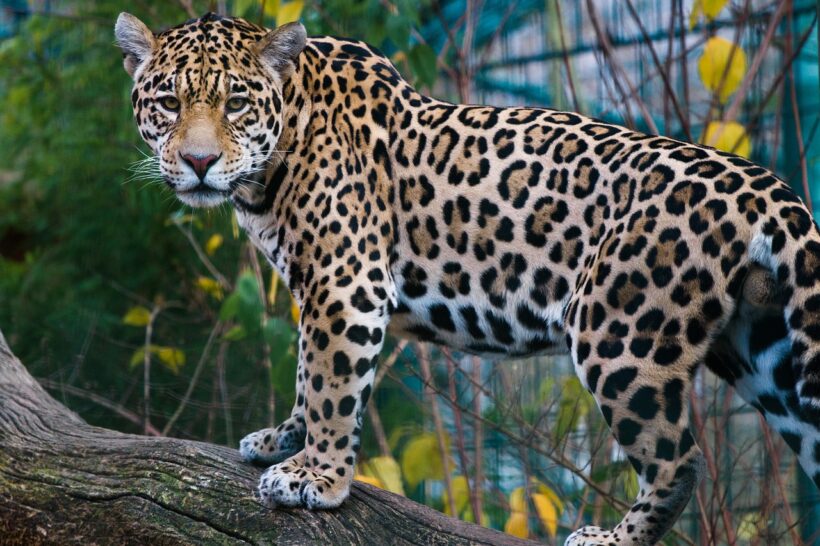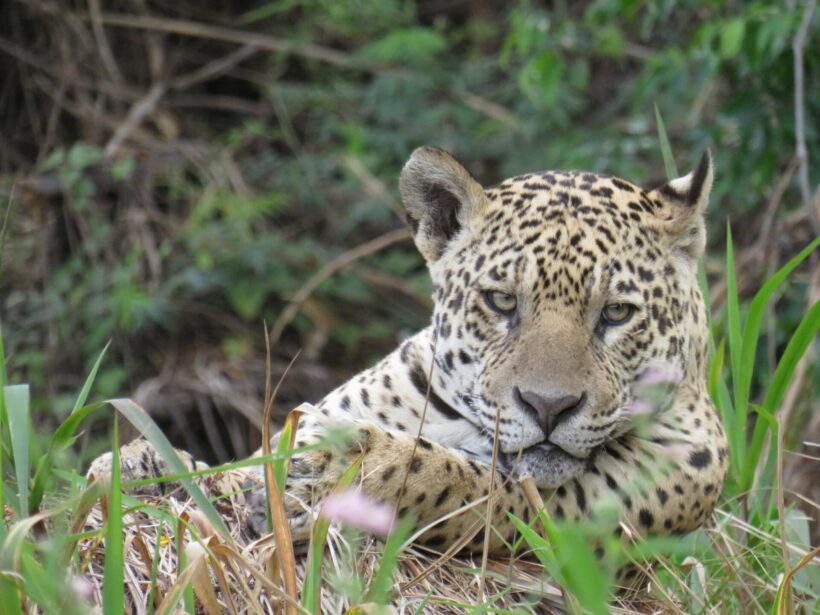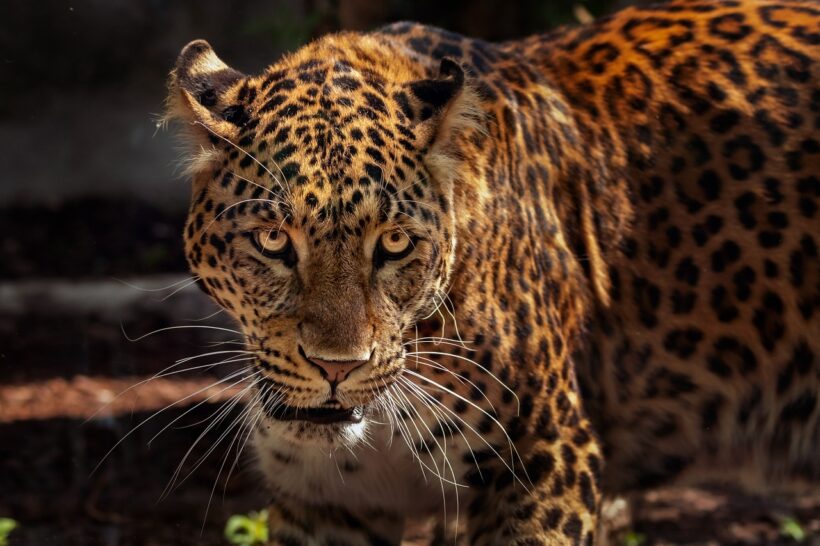by: Assaf Levy, BioDB
In the past, jaguars were revered as deities, but currently, their population is being drastically reduced throughout their habitat.
Explore the deep, dense jungles where a stunning and mighty creature resides—the incredible jaguar. This majestic big cat grabs your attention and sparks your imagination with its captivating patterns and intense gaze. Join me on an exciting journey through the lush trees as we uncover the mysteries of this fascinating animal.
Learn about its special traits, find out how many are left in the wild, and understand why it’s crucial to protect them. Get ready to be amazed by the breathtaking beauty and strength of the mysterious jaguar.
Meet the Amazing Jaguar
The jaguar (Panthera onca) stands as the third-largest big cat on the planet and the only big cat in the Americas, effortlessly blending grace with raw power. They resemble the leopard, but their coat displays larger and more spaced-out rosettes, often with central spots inside each, creating a less clustered pattern.

Pixabay | CC0
These big cats live mainly in the Americas, adapting to different environments. They’re found in the Amazon Rainforest (Brazil, Peru, Ecuador, Colombia), Pantanal Wetlands (Brazil), Gran Chaco (Argentina, Paraguay, Bolivia), and Cerrado biome (Brazil). They also roam through Central America (Mexico, Belize, Costa Rica, Guatemala) and the Yucatán Peninsula (Mexico). Despite their adaptability, jaguars are at risk due to habitat loss. Conservation efforts are crucial to protect these majestic cats across their diverse habitats.
Jaguars mean a lot to people living where they roam. They’re not just strong predators but symbols of power in indigenous cultures. These big cats are part of local stories and traditions, representing a connection to nature. Some see them as guardians or special beings. Jaguars also bring economic benefits through wildlife tourism, creating jobs. However, in places where people farm, jaguars can cause issues. Conservation efforts aim to find solutions that let people and jaguars live together
peacefully, respecting these amazing creatures’ cultural and natural heritage.
Population Status: The Silent Decline
Despite its revered status, the jaguar faces a silent decline, with an estimated population of around 173,000, according to the World Wildlife Fund. Rapid habitat loss, driven by deforestation and human encroachment, threatens these majestic creatures. In addition, poaching and conflicts with farmers further exacerbate the challenges for jaguar populations. They are facing an increasing threat from poaching, as they have been historically hunted for their fur. Additionally, there is a rising illegal trade as jaguar teeth and bone products are being exported to China.
Recent studies paint a concerning picture, revealing a decline in jaguar numbers across their range. The encroachment of human activities into jaguar habitats disrupts the big cat’s way of life and intensifies the risk of human-wildlife conflicts. The once-vast territories these big cats called home are shrinking, leaving them at the mercy of an ever-changing landscape.
Conservation Status: The Urgency of Action
Currently, the jaguar is listed as “Near Threatened” on the International Union for Conservation of Nature’s Red List. This status signals a pressing need for attention and action. The loss of habitat and the increasing human-wildlife conflicts demand immediate, concerted efforts to safeguard the future of these iconic creatures.
Conservationists and scientists are ringing alarm bells, emphasizing the urgency of preserving jaguar habitats and mitigating human-wildlife conflicts. Without swift and decisive action, the silent decline of the jaguar may escalate into a devastating crescendo.

Pexels | CC0
Conservation Efforts: A Collective Symphony of Hop
Initiatives to establish and connect protected corridors, ensuring safe passage for jaguars, have gained momentum. Conservation organizations collaborate with local communities to promote coexistence, addressing the root causes of conflicts and championing sustainable practices. These efforts aim not only to protect jaguars but also to preserve the delicate balance of their ecosystems.
In certain regions, community-based conservation programs have successfully reduced conflicts and created a harmonious relationship between humans and jaguars. Education and awareness campaigns play a pivotal role in these initiatives, fostering a deeper understanding of jaguars’ vital role in maintaining healthy ecosystems.
Local communities also play a crucial role in the conservation narrative. Conservationists are fostering a sense of shared responsibility by involving them in decision-making processes and emphasizing the economic value of ecotourism. Sustainable development that benefits both humans and jaguars is becoming a cornerstone of successful conservation efforts.

Pixabay | CC0
The fate of the jaguar rests not only in the hands of conservationists but also in the choices we make every day. By supporting sustainable practices, raising awareness, and fostering coexistence, we become guardians of the jungle, ensuring that the enigmatic roar of the jaguar continues to resonate through the wilderness for generations to come. The time to act is now, for in preserving the jaguar, we secure the harmonious balance of our shared home.
About the Author:
 Assaf Levy is the Founder & CEO of BioDB.com – a group tasked with collecting conservation data, raising awareness for biodiversity loss, and fundraising. https://biodb.com/
Assaf Levy is the Founder & CEO of BioDB.com – a group tasked with collecting conservation data, raising awareness for biodiversity loss, and fundraising. https://biodb.com/






